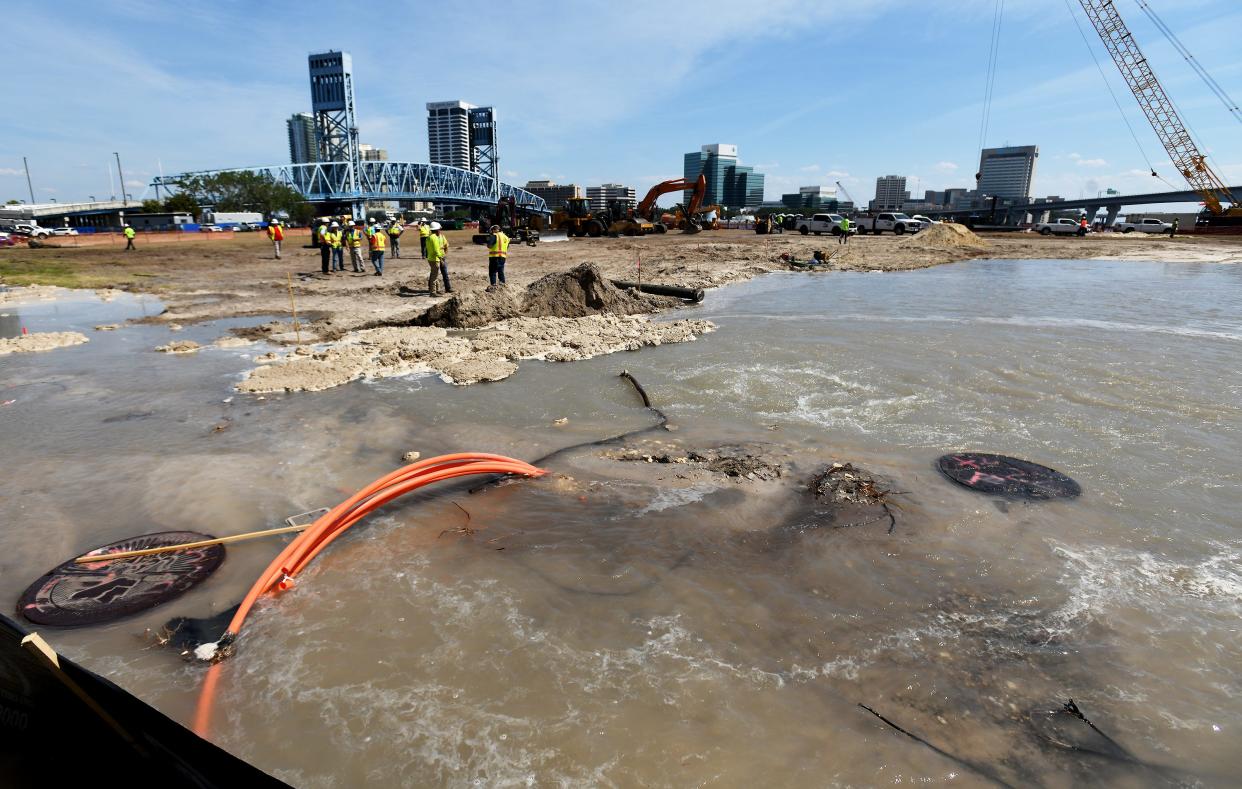Jacksonville environmentalist: City's developmental model is counterproductive on climate

In an April 28 guest column concerning the direction of development for the former Jacksonville Landing site, Rick Pariani stated “Less is more — bigger is not always better.” In a May 12 guest column, Natalie Rosenberg and others from Riverfront Parks Now urged the city to “do it right, do it now and do it all.”
Both columns describe how the project has become overly complex, and both agree philosophically regarding the advantages of simply building a park. Pariani urges Mayor Donna Deegan to heed advice from Riverfront Parks Now, Scenic Jacksonville, the Jesse Ball DuPont Fund and the St. Johns Riverkeeper. Rosenberg is chair of the Riverfront Parks Now Steering Committee.
In fact, they both make sense. It is what should be done, for more reasons than outlined in their columns.
A letter from Sarah Van Cleve also appeared on May 12. She asked, “What do you want to enjoy and leave behind for your grandchildren — a 44-story building or a world-class park that would also solve downtown’s flooding problem?” As prescient and fundamentally spot-on the above authors sound, it is sad to say it flies in the face of prevailing practices.
These practices, which have governed development since the end of World War II, amount to this: “If there is land, something must be built on it.” This includes land at the water’s edge, where at least one-third of us live.
You can get an idea of what to expect from future flooding in Jacksonville simply by looking at the online sea level rise viewer created by the National Oceanic and Atmospheric Administration. It’s an eye-opening exercise, drawing attention to the idea Jacksonville may have a serious flood risk in the not-so-distant future.
Not part of the plan: Riverfront Plaza unexpectedly gets a pond when contractors break water main
Consider all the recent development being planned: Rivers Edge; Southerly at Southbank; MOSH; the 25-story luxury apartment tower next to Friendship Fountain; The Four Seasons; One Riverside Ave; and EverBank Stadium. All will be (if not inundated) difficult to reach. The sea level rise viewer shows flood levels up to 10 feet. Unimaginable? Maybe not.
In a 2021 article published in The Guardian, Harold R. Wanless, Ph.D., professor of geology at the University of Miami, noted that “NOAA in 2017 projected global mean sea level could rise five to 8.2 feet by 2100.” He went on to call that “a moderate projection” in retrospect, citing regional influences — subsidence, changing ocean currents and redistribution of Earth’s mass as ice melts — that will cause to predict that some local sea level rise could be anywhere from 20-70% higher than the overall global result.
Letters: Retired Jacksonville doctor says abortion laws not based on religion, but science
In the face of this, Van Cleve’s statement is hopeful, at best. One park at the foot of the Main Street bridge will not solve the flooding problem alone. As a section of a waterfront buffer system ceding land that will be inundated, it could be a facet of a greater program helping to mitigate coming challenges.
In any event, the developmental model the city is operating with is counterproductive. The sooner this is embraced, the better off we all will be.

Chris Hildreth, Jacksonville
This guest column is the opinion of the author and does not necessarily represent the views of the Times-Union. We welcome a diversity of opinions.
This article originally appeared on Florida Times-Union: Former Jacksonville Landing site must address future sea level rise
